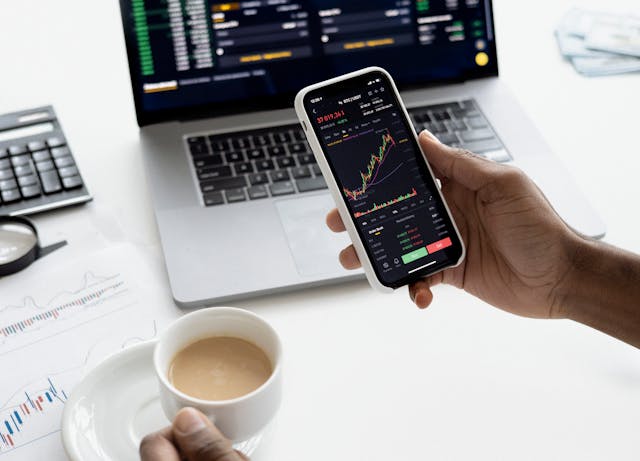After spending nearly all of December backtesting and analyzing various strategies, I thought it would be best to kick off this year by sharing my findings on the best method of trading: scalping (or day trading), swing trading, or position trading.
Before diving in, here’s a quote from Leonardo da Vinci: “Simplicity is the ultimate sophistication.”
I’ll add my own version: “There’s beauty in simplicity.” In fact, that was the tagline of my very first website back in 2012—www.9jatrend.com.

This philosophy alone might hint at what the best trading method is for most people. But if you’re still in doubt, let’s dig deeper into my findings.
Lessons from December’s Testing Marathon
Last month, I spent countless hours building, fine-tuning, and testing various strategies. I started with MetaTrader 5 on my PC and later moved to TradingView’s strategy tester for deeper insights. Here’s what I discovered:
- Active trading strategies tend to break even in the long run. Over 2, 3, 5, or even 10 years, strategies that involve frequent trades typically result in little profit or loss—especially when you’re disciplined with position sizing (e.g., risking 1% per trade).
- Less is more. Strategies with fewer trades and longer holding periods are often more profitable over time.
- Adaptability is crucial. Markets are constantly evolving. What worked two years ago might not work today. Blindly sticking to outdated techniques is a recipe for disaster.
- Focus on buying appreciating assets. Strategies that concentrate on buying assets like crypto, stocks, and indices (while staying out during bearish periods) tend to outperform strategies that buy and sell indiscriminately. You may also decide to sell depreciating assets like fiat currencies.
- Short-term success doesn’t guarantee long-term profitability. Some strategies that worked brilliantly on a 30-minute timeframe faltered during long-term backtesting. This taught me the importance of refining strategies and taking breaks after winning streaks to reset.
With these insights in mind, let’s break down the three types of trading and my findings for each.
1. Scalping/Day Trading
Scalping involves placing and exiting trades within a day, often multiple times in a week or even a single trading session. It’s popular on social media, but here’s the reality:
- Less profitable: Due to the random nature of markets, you’ll likely face a higher percentage of losing trades. This doesn’t mean you can’t be profitable, but only a small percentage of traders can endure multiple losses without emotional interference.
- Time-intensive: Day trading demands hours of screen time daily. Ask yourself, is staring at charts for 5+ hours a day worth a little profit, a break-even result, or even a loss?
- High fees: Frequent trading means higher commissions and spreads—great for brokers but bad for your account balance.
Recommendation: If you want to day trade, be extremely disciplined or automate your strategy with expert advisors or trading bots. Let technology handle the repetitive work while you focus on other priorities.
2. Swing Trading
Swing trading involves holding trades for days or weeks, allowing you to capitalize on medium-term price movements. Here’s why it’s a better option:
- Moderate profitability: While not as profitable as position trading, swing trading is far better than scalping in the long run.
- Less time-demanding: You don’t need to monitor charts constantly, freeing up time for other activities.
- Fewer emotional pitfalls: With fewer trades, there’s less room for impulsive decisions caused by consecutive losses.
Recommendation: Swing trading is ideal for beginners and those with busy schedules. It’s a balanced approach that offers profitability and time freedom.
3. Position Trading
Position trading involves holding trades for weeks or months. My analysis revealed this to be the most profitable form of trading by far:
- High profitability: Position trading outperforms other methods in the long run due to fewer trades and a focus on larger market movements.
- Minimal time commitment: You spend far less time monitoring markets, leaving room for other pursuits.
- Better for mental health: With fewer trades, you’re less likely to be emotionally affected by market fluctuations. This makes position trading ideal for those with other businesses or personal commitments.
Recommendation: Position trading is the best approach for long-term profitability and a balanced lifestyle. Use reputable brokers like Binance, Bybit, or Exness to ensure smooth withdrawals and avoid scams.
Final Thoughts
At 9jacashflow, we advocate for swing and position trading. If you must day trade, ensure you’re disciplined or use automated systems.
Consider these questions before choosing your trading style:
- Why are the world’s top investors not day traders?
- Why are the richest people in the world not spending hours staring at charts?
People may lie, but numbers don’t. Scalping may look glamorous on social media, but the reality is often different. Many influencers make more money from referrals, partnerships, and training than from actual scalping or day trading.
At 9jacashflow, we prioritize transparency and our community’s success over flashy marketing deals. We encourage you to backtest, analyze, and share your findings in the comments. Together, we can all grow as traders.
Here’s to a profitable and fulfilling 2025! Let’s trade smarter, not harder.
Join our Telegram Channel for more daily market insights and exclusive trading tips.
Discover more from 9jacashflow.com
Subscribe to get the latest posts sent to your email.






